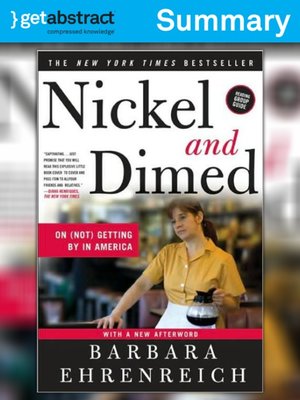

Siegel had to experience the same conditions that Ehrenreich describes, so her husband was not affluent from the beginning, but she appears to cope with the situation better (Greenfield 00:51:25-00:53:00). They are ambitious, but their dreams seem unachievable, especially during the crisis (Greenfield 00:37:00-00:38:00). Meanwhile, The Queen of Versailles may focus on the struggles of white people from the other side of the spectrum, but the non-white servants’ perspective is also of interest. She discovers that even if one is of the same race as the customers or the employers but at a disadvantageous position, their treatment can still be similar to a pimp (Ehrenreich 66).

While Ehrenreich has encounters with other ethnic or racial groups, she eventually moves to a mostly homogeneous Maine (Ehrenreich 33).

Perhaps, housing is one of those phenomena that affects everyone regardless of their income.Ī curious fact about both works is that they mostly describe white people’s experience in those economic situations. In both cases, it seems that those who are richer had no vested interest in changing the status quo, and working several jobs or auctioning goods could not resolve the issue. Unlike them, the Siegels kept their vast mansion after financial difficulties, but the size of the family and the help made the situation almost equally taxing (Greenfield 00:48:27-00:48:40). Ehrenreich’s co-workers from Hearthside had poor living conditions, ranging from “crowded situations” to trailers or boats (Ehrenreich 20). The theme resonates with low-income people, too, as they wish to leave inconvenient accommodations (Ehrenreich 20).

The documentary’s premise is that the family wanted to move to a bigger, more pompous house, which became an unachievable dream. People in Nickel and Dimed are used to constant survival, and the characters from The Queen of Versailles will have to learn what it means. While it may seem that the stories are not related in any way, they share the concept of income, which affects their lives differently. On the other hand, the documentary shows the decline of a relatively affluent family due to the crisis and overall mismanagement they face due to not performing most tasks themselves. Ehrenreich documents the life of various low-income communities throughout the country while attempting to experience it herself. Nickel and Dimed and The Queen of Versailles supposedly present two financial extremes existing in American society, although they are not as different as one might think.


 0 kommentar(er)
0 kommentar(er)
